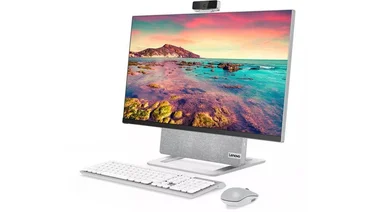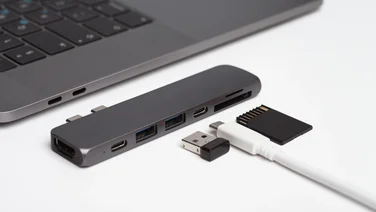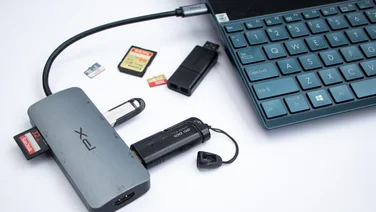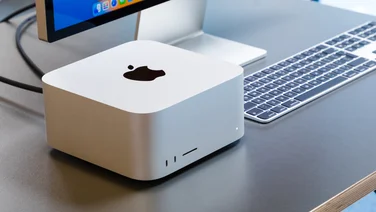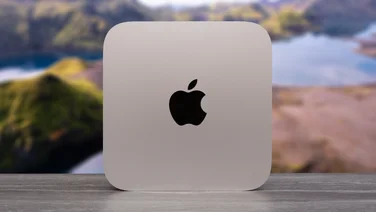To help us provide you with free impartial advice, we may earn a commission if you buy through links on our site. Learn more







- Elegant design
- Fast performance
- Wonderful display
- Expensive
- Thick bezels around screen
Apple hasn’t changed much about the 27in iMac in 2020, which, in a world where some companies update their products on a six-monthly cycle, makes it a rare exception. In fact, the design and exterior of the iMac haven’t been altered significantly for years – it’s still the elegant, slender, silver and black all-in-one it has been since the 2012 overhaul.
That might change next time around, when Apple’s switch over from Intel’s chips to its own silicone for Mac products should be in full flow but, for now, the iMac remains one of the more attractive and powerful all-in-ones on the market.
READ NEXT: The best laptops money can buy right now
Apple iMac 27in (2020) review: What you need to know
The changes Apple has made to the 2020 machine are subtle. There’s a new “nano-texture” anti-reflective glass option, which helps reduce glare for those working in bright rooms or near windows. It’s also the first iMac with Apple’s ‘True Tone’ display tech and the system’s audio and webcam systems have also received an upgrade.
Otherwise, the new 27in iMac is all about the performance increases brought about by the introduction of new high-performance 10th Gen Intel chips and AMD Radeon Pro 5000 series graphics, plus new options to upgrade the RAM and storage to the giddy heights of 128GB and 8TB.
The iMac 27in is also notable for the fact that it’s the first generation of iMac not to offer a Fusion drive in one of its default configurations. Whichever model you choose to buy, the 27in iMac includes faster solid-state storage.
Apple iMac 27in (2020) review: Price and competition
The Apple iMac 27in (2020) is a premium all-in-one PC and, as such, you’re paying premium prices for it, whichever model you plump for. The base configuration costs £1,799, which scores you a 3.1GHz six-core Intel Core i5-10500 processor with 8GB of RAM, an AMD Radeon Pro 5300 GPU with 4GB of GDDR6 RAM and a 256GB SSD – plus that glorious 27in 5K IPS display, of course. The nano-texture, anti-glare glass costs £500 extra.
Prices rise steadily from this point as you go up the range. Further CPU options include the six-core 3.3GHz Core i5-10600, the octa-core 3.8GHz Core i7-10700K and the ten‑core Intel Core i9 with RAM options running from 8GB all the way up to 128GB. Storage is all SSD for the first time in any iMac range, starting at 256GB in the cheapest machine up to 8TB. As for graphics, you can choose the AMD Radeon Pro 5300, the 5500XT (8GB GDDR6), the 5700 (8GB GDDR6) or the 5700XT (16GB GDDR6).







Pimp it out fully and the iMac 27in will end up costing you £8,799 with the 128GB RAM and 8TB SSD upgrades unsurprisingly costing the most. For this review, I was sent something slightly less expensive: the Core i7-10700K model with 8GB of RAM, an AMD Radeon Pro 5500XT with 8GB of GDDR5, and a 512GB SSD. This model costs £2,799.
Few serious rivals exist for the 27in Apple iMac outside the iMac Pro. Dell offers the 27in Inspiron 27 7000 all-in-one but it’s no match in performance terms for the iMac, featuring a mobile Intel CPU and an Nvidia MX110 GPU instead of the desktop components favoured by Apple.
Microsoft’s Surface Studio 2 is another option and comes with a touchscreen you can sketch and draw on, but Microsoft hasn’t updated the specification for a while (the CPU is only 7th Gen) and prices are high, starting at £3,549 inc VAT.
The HP Envy 32-a0012na is a better alternative and comes with a larger 4K screen, an Intel Core i7-9700 CPU, an Nvidia RTX 2080, 32GB of RAM and a 512GB SSD. Overall, that’s a better specification than our review iMac for similar money. There’s also the Asus Zen AIO 27, which comes with an inferior spec – 8th Gen Intel Core i5, a 4K touchscreen and an NVidia RTX 1050 GPU – but costs only £1,200.
Apple iMac 27in (2020) review: Design and new features
When it comes to the sheer elegance of design, though, there’s still nothing out there that can beat the iMac. Its anodised silver finish, one-piece L-shaped stand and gently bulging rear tapering to ultra-thin 5mm edges will cut a dash on any desk, no matter the location.
You could make the argument that the rather broad 27mm bezels are beginning to look a little old hat and that Apple could do with adding height adjustability but there’s no denying, despite its age, that this remains an iconic piece of design.
The only things that have changed very slightly over the years (aside from the keyboard and mouse) are the ports. The 2020 iMac (like the 2019 27in iMac) has two USB-C Thunderbolt 3 ports to replace the original’s Thunderbolt ports. It also has a faster SD card reader this year, boosting it from SDHC to SDHX, which enables support for faster UHS-II memory cards. Customers can also now upgrade from Gigabit Ethernet to 10 Gigabit Ethernet at the point of purchase for an added £100. In appearance, however, it all looks more or less the same as it ever has: the ports are still situated in a neat vertical row, behind the screen in the bottom-right corner.
The iMac’s other new features all reside inside. The performance-related stuff I’ll get to below but there are a couple of other things to note. First, is the introduction of the T2 chip, a feature that has trickled down from Apple’s MacBooks and iPads.







Among its various jobs, the T2 chip now acts as a DSP/ISP, improving audio quality with adaptive EQ and processing the video feed from the webcam, adjusting exposure and tone mapping on the fly. It can even take on certain video rendering tasks, too, including the encoding and decoding of HEVC video files, freeing up your CPU and GPU to carry on with other jobs while your projects render out in the background.
While I’m on the subject of video and audio, the new iMac also has an improved 1080p FaceTime HD webcam and similar “studio quality” microphones to the 16in MacBook Pro. Both of these, given the amount of time a lot of people are now spending working at home, are welcome improvements.
Apple iMac 27in (2020) review: Display
One of the biggest upgrades to the new iMac is the nano-texture anti-glare display. It’s a £500 option rather than the default and Apple didn’t include it on our review unit so, alas, I can’t say how effective it is. But the idea is to etch a matte finish into the surface of the screen glass instead of adding an extra layer, thus cutting glare without damaging the overall image quality.
It’s also the first time Apple’s True Tone tech has made its way onto an iMac display and it works just as well as it does on the company’s iPads and iPhones. It matches the white point of the display to the ambient light in the room, so your eyes don’t have to do as much readjustment when looking away from the screen and back at it.







Otherwise, the quality of the 27in 5K IPS display is as unimpeachable as ever. The resolution is a super sharp 5,120 x 2,880 with a pixel density of 218ppi and it’s calibrated in the factory to the wide Display P3 colour gamut.
Colour accuracy is fantastic within that colour space with a measured average delta E of 0.81 (the lower the better). The screen is super bright, reaching a measured peak of 533cd/m², its contrast ratio is decent at 1,046:1 and, although it doesn’t strictly support HDR content, movies and games still look beautifully vibrant on it. It’s a fabulous display.
Apple iMac 27in (2020) review: Performance
We’ve come to expect the latest 10th Gen Intel desktop chips to deliver in spades when it comes to overall performance and the octa-core Intel Core i7-10700K in my review iMac is no different.
Although this is far from the fastest chip in the new series (and not the fastest you can specify in this year’s 27in iMac), its performance matches 2019’s top-end iMac CPU – the Intel Core i9-9900K. It’s also faster than the Intel Xeon W-2140B CPU in the iMac Pro we tested in 2018, although it’s worth noting that this octa-core CPU has now been dropped from the iMac Pro lineup.
Nevertheless, this is impressive stuff and, if you’re doing heavy-duty video rendering and 3D modelling, you’ll be able to extract even more performance from the 2020 27in iMac by specifying the ten-core 10th-Gen Intel Core i9 CPU.


As you can see from the charts above and below, the 27in iMac performs at or above the level of last year’s machine in a variety of benchmarks, with overall better performance than the 2018 iMac Pro, especially in the graphics-heavy Unigine Valley and Heaven tests.

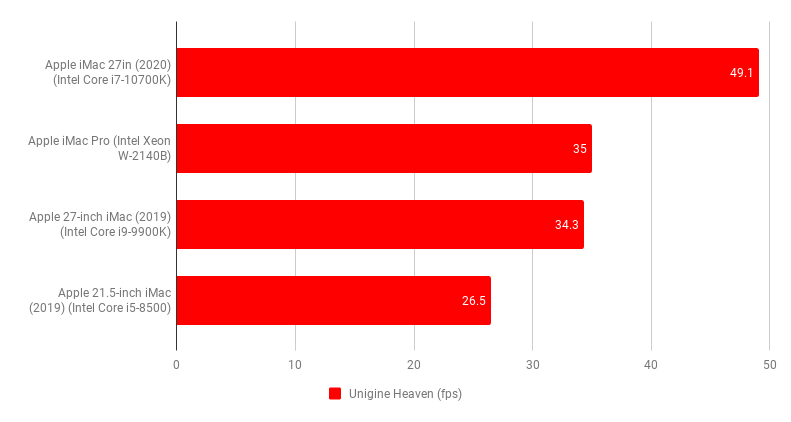

As for the performance of the SSD, that’s a touch more consistent than last time out, with the Blackmagic Disk Speed Test reporting 2,312MB/sec and 2,342MB/sec for sustained read and write speeds:

Apple 27in iMac (2020) review: Verdict
Clearly, the 2020 27in Apple iMac is an impressive machine. It’s as elegant and well made as all-in-one PCs get and, if your preference is for something minimalist that will also serve your heavy-duty video rendering or 3D design requirements, then it’s a very good choice.
Performance is better than last year’s machines and it can be specified with huge amounts of RAM and SSD storage now – albeit at rather high prices. The display is something special and the addition of the nano-texture option and True Tone as standard make it that bit better. And there’s now a 1080p webcam and improved microphones for good measure, too.
The one thing that would give me pause as an Apple iMac fan is the proximity of the release of this particular iMac to the big change from Intel silicone over to Apple’s own ARM-based chips in the near future. The first Macs based on the new CPUs are expected to be released by the end of 2020 and Apple says it will complete this transition in around two years.
With that in mind, and no matter how good the Apple 27in iMac (2020) is, it might be wise to delay spending such a significant sum of money on an Intel-based Mac machine and wait to see what transpires later this year.

